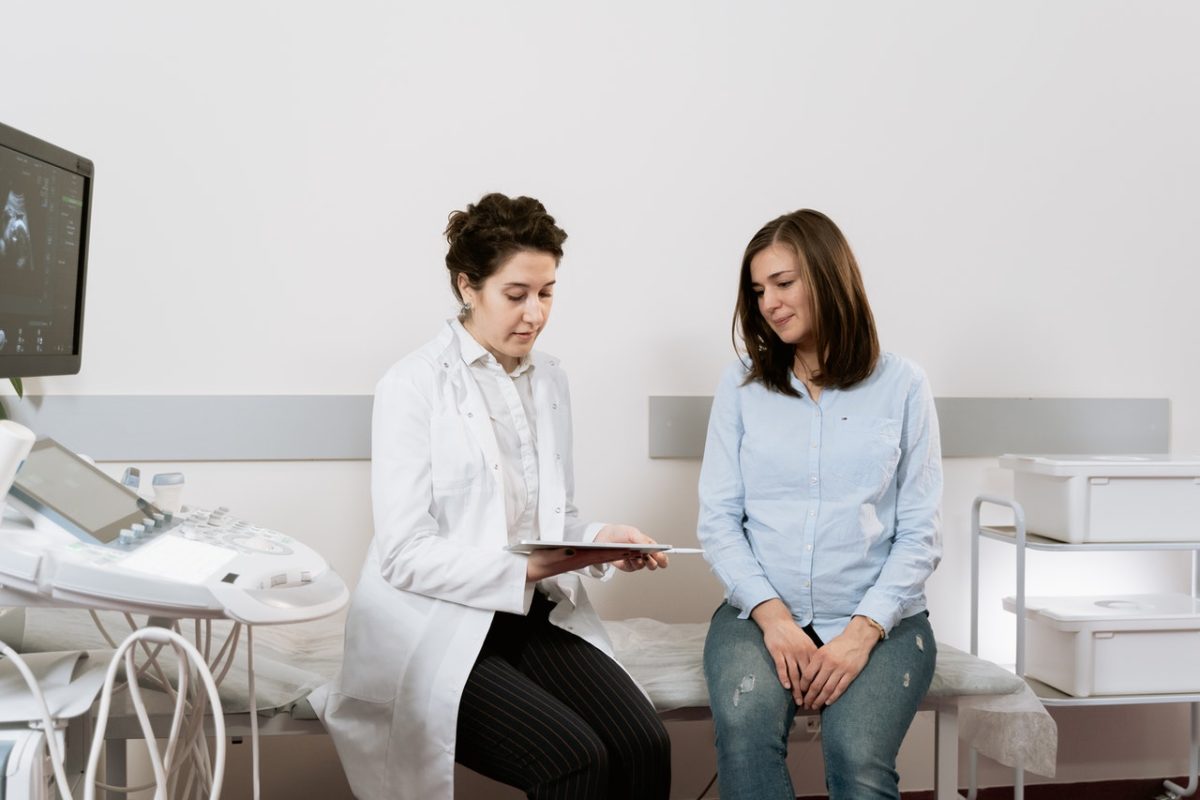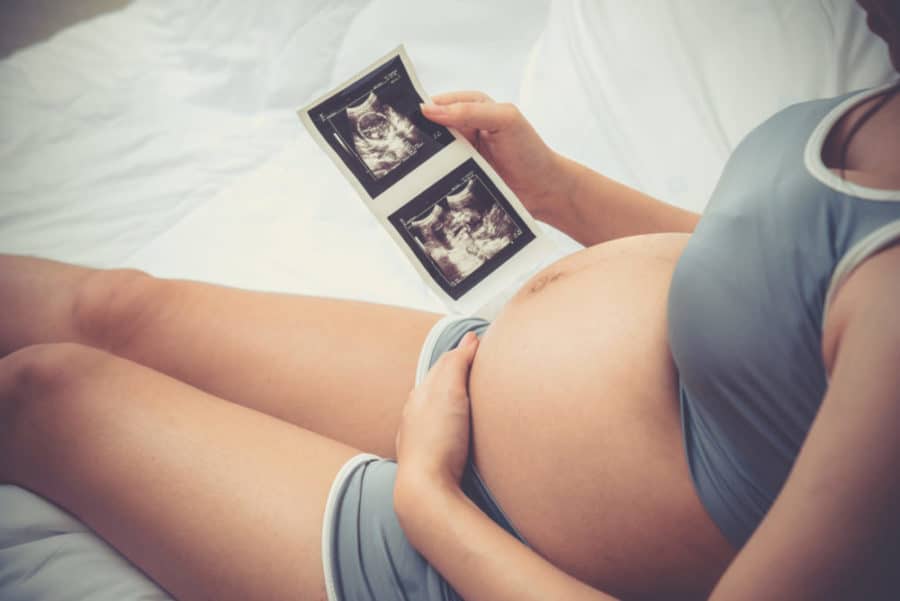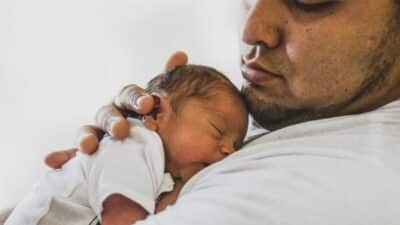Prenatal diagnostics: what methods are available?
Entitlement to three ultrasound examinations
A woman with statutory health insurance is entitled to three ultrasound examinations during her pregnancy, at around the 10th, 20th and 30th week of pregnancy. Even during these routine examinations, it is helpful if the parents-to-be have a clear position on whether they want to make use of prenatal diagnostics, because if abnormalities are detected, decisions on follow-up examinations may be necessary.
During the basic ultrasound examinations, the doctor checks:
- whether it is a single child or a multiple children
- whether the child is developing accordingly to its age
- whether there are any developmental problems
During the second ultrasound examination, pregnant women can decide whether to have an extended ultrasound examination or not. The doctor, who needs an additional qualification and special equipment for this, examines the head, neck, torso, breast and back. Only the advanced, non-invasive and invasive methods such as neck fold measurement and amniocentesis, are summarized under the term prenatal diagnostics.
The examinations of prenatal diagnostics
The methods of prenatal diagnostics can be divided into invasive and non-invasive examinations. Non-invasive examinations pose no risk to mother and child, but do not provide a desisive diagnosis, only probabilities for diseases or malformations. The invasive methods, which requires an intervention, provides more accurate results, but are always associated with a risk. For this reason, they are usually only used in case of a high probability that the child has a disease or disability that needs to be clarified. You can read more about the individual methods below.

Non-invasive
First trimester screening: nuchal fold measurement and blood test (10th — 14th week of pregnancy)
What is it? First trimester screening is a way of finding out the risks of a chromosomal abnormality such as trisomy 21. The screening consists of the so-called nuchal fold transparency test in combination with a blood test. A thickened nuchal fold and a shortened nasal bone as well as certain hormone and protein values can be an indication of a chromosomal abnormality.
What information does the test provide? The first trimester screening does not provide a diagnosis, but rather information about the probability of a chromosomal abnormality — whereby the age of the pregnant woman as well as the duration of the pregnancy are included in the result. However, this is susceptible: an initially conspicuous finding turns out to be a false alarm in 96 out of 100 times. Conversely, 10 out of 100 abnormalities remain undetected.
What does it cost? The costs vary between 120 and 200 euros. As a rule of thumb, they are not covered by health insurance, but it may be worth asking.
Second trimester blood test: risk analysis (possible up to the 20th week)
What is it? In the second trimester blood test, certain hormones and protein values can provide information about trisomies, a neural tube defect, an open back or a non-closed abdominal wall.
What information does the test provide? As with first trimester screening, a statistical risk is determined. However, the second-trimester test is less accurate than the first-trimester screening.
What does it cost? If it is medically necessary, the costs are covered by the health insurance, otherwise you can expect to pay around 300 euros.
Organ ultrasound and Doppler ultrasound (from the 20th week)
What is it? In specialized practices, high-resolution ultrasound can be used to detect malformations from the 13th week onwards. In addition, this so-called organ ultrasound is also recommended between the 20th and 22nd week. The Doppler ultrasound measures the blood flow between the blood vessels of mother and child.
What information does the examination provide? The examinations provides information about abnormalities in organ development and the supply of the child via the placenta. The significance of the examinations depend on various factors, such as the position of the child in the womb and the experience of the examining doctor.
What does it cost? If there is a medical indication, the health insurance companies pay the costs. Otherwise, the costs are around 300 euros.
Genetic blood test for chromosomal abnormalities (from the 10th week)
What is it? For the genetic blood test, blood is taken from the mother, which contains the genetic material of the child. It is particularly suitable for high-risk pregnancies of women over 35.
What information does the test provide? The DNA snippets can be used to determine the probability of chromosomal abnormalities such as trisomy 21, trisomy 18 and trisomy 13. The results are very reliable, but do not provide a one hundred percent result.
What does it cost? The costs vary between 130 — 540 €, depending on the doctor treating you. In addition, about 50 — 60 € are charged for the consultation and blood sampling.
Invasive
Chorionic villus sampling or placenta puncture (11th to 14th week)
What is it? Usually, tissue from the placenta is removed through the abdominal wall, rarely the procedure is done through the vagina.
What information does the examination provide? The results provide reliable information about chromosomal abnormalities and hereditary diseases.
Risk: A placenta puncture leads to a miscarriage in one to four out of 200 pregnancies.
Amniocentesis (from the 15th week)
What is it? The doctor removes amniotic fluid containing foetal cells through the abdominal wall using a hollow needle. These cells are then multiplied and examined in the laboratory.
What information does the examination provide? Amniocentesis can detect hereditary diseases, chromosomal abnormalities and neural tube defects.
Risk: After an amniocentesis, one in 200 women suffers a miscarriage.
Umbilical cord puncture, medically called cordocentesis/chorocentesis (from the 18th week).
What is it? Blood is taken from the umbilical cord of the baby. The procedure is done through the mother’s abdominal wall.
What information does the test provide? The puncture of the umbilical cord can detect infections, anaemia, blood group incompatibility and chromosomal abnormalities. It is also used to validate the abnormal results of an amniocentesis.
Risk: One to three umbilical cord punctures out of 100 result in a miscarriage.

Conclusion: Methods of prenatal diagnostics
Prenatal care is part of the everyday life in German gynaecologists’ surgeries. Ultrasound examinations, which are paid for by health insurance companies, provide information about the development of the unborn child and can give initial indications of diseases and malformations. If the pregnancy proceeds normally, no further examinations are usually necessary. Nevertheless, more and more pregnant women are being offered further examinations as individual health services. Weigh in the benefits carefully: Non-invasive methods do not provide clear results, but only probabilities. Unclear results can require you to make far-reaching decisions. The rule of thumb “have as few examinations as necessary” to protect expacting parents from unnecessary uncertainty.
About Fertilly
At Fertilly, we have made it our mission to accompany couples (homosexual and heterosexual) and singles on the way to fulfilling their child wish. In doing so, it is important to us to create transparency in the area of fertility services, to provide information and knowledge on the topics of pregnancy and fertility and to help you to find the most suitable Fertility Center. Through cooperation with first-class Fertility Centres and clinics in Europe, enquiries about Fertilly are given preferential treatment. This means that our patients avoid the usually long waiting times and get appointments more quickly.
If you would like more information about Fertility Centers, success rates and prices, please contact us using this questionnaire. We will advise you free of charge and without any obligation.
-
Answer the first questions in the online form in order to book an appointment. This way we can better address your needs during the conversation.
-
We will find the best contact person for your individual needs. Schedule 20 minutes for the consultation.
-
We will introduce you to the right fertility clinic from our network, make an appointment and accompany you until your wish for a child is fulfilled.









